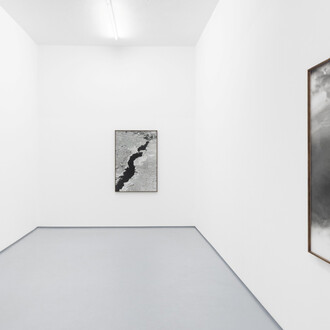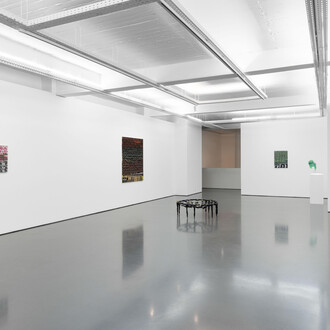If translated visually, the "mental image" of a labyrinth can instantly lead us to a vertiginous plunge that soon unfolds into the beauties, pleasures, fears, confabulations, and endless questions tied to human existence and also to the artistic endeavor. Chosen by José Bechara (Rio de Janeiro, 1957) as the title for this exhibition, Wanderings in the labyrinth brings together a collection of the artist’s new works, highlighting the multidisciplinary nature of his practice.
Working across diverse mediums, Bechara navigates his self-constructed labyrinth with the dexterity of a master: his works—whether in painting, sculpture, photography, or beyond—compose a cohesive "body of work" that reflects an artist committed to creating across different media and continually experimenting in various realms. This journey, shared here by the artist with his viewers, reveals itself as that of a flâneur wandering through a diffuse and endless labyrinth of artistic possibilities—possibilities as erratic as they are precise, as diffuse as they are Cartesian.
In his canvases, Bechara begins his process with materials that once served as truck tarpaulins—unconventional surfaces already steeped in history and experience, far removed from the clean, aseptic surface of the traditional white canvas. These are large, robust fabrics, already marked by time, covered in stains, darkened areas, and the visible signs of wear and existence.
Upon these fabrics, the artist pictorially inserts a kind of grid—lines and marks that allude to the order of the modern grid—as well as geometric motifs such as spheres, squares, rectangles, and more. It is worth noting here the use of both acrylic paint and oxidized materials, which blend together to create layered volumes, colors, and textures. The coexistence of these elements reveals a painting filled with signs of memory, shaped by the artist's poetic gestures during his studio process.
In this new body of work, Bechara also presents possibilities of experimentation that go beyond the mere surface of the canvas and extend into its contours. In small-scale pieces, the artist creates a series of works in circular and other nontraditional formats, establishing a metalinguistic relationship between the geometric signs within his paintings and the very shapes of the works themselves.
Thus, a cohesive set is formed—one that at times evokes the labyrinthine diffusion mentioned in the exhibition's title, and at others presents a group of works that not only shed light on Bechara’s multidisciplinary practice but also catapult us into dreamlike, earthly, sidereal, labyrinthine, Cartesian images, and beyond—continuing endlessly.
(Text by Victor Gorgulho)














